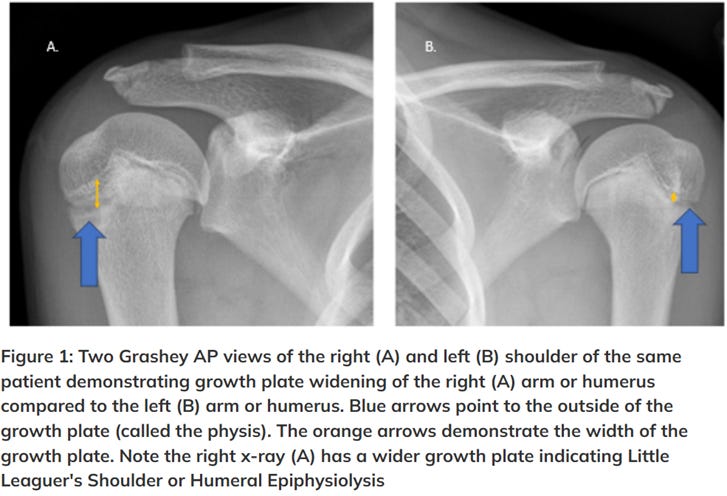TPM #316: What It Means To Be a 24 Hour Athlete.
Year-round participation and fear of missing out are hurting our athletes health and performance. Here is how we fix it.
Welcome to edition #316 of The Physical Movement (TPM).
TPM has documented the dangers of sport specialization at too young of an age. Those dangers do not stop as the athlete gets older, in fact they are often compounded if not addressed at an early age.
The concept of 10,000 hours of practice to develop mastery put forth by Malcom Gladwell has been misinterpreted to mean that more is better when it comes to specific skill development.
There are consequences to high repetitions and repetitive stress on anybody, let alone those that are still growing and developing.
Talk to those who work with young athletes on the health and sport conditioning side, and you will start to hear common observations.
Young hockey players who skate year-round are developing hip and back issues that would normally be seen in much older individuals.
Recent research in elite hockey players suggests that the development of cam morphology (a change in the shape of the ball of hip, which causes damage to the socket) is related to the repetitive shear stresses experienced at the hip joint during adolescence from skating.
Baseball players have arm, shoulder and spine wear and tear that they would not normally see in people so young.
One example is what is called Little League Shoulder, a condition in which the growth plate of the upper arm (humerus) adjacent to of the shoulder endures too much stress with repetitive throwing. The growth plate sustains many tiny fractures that in time accumulate. Left untreated, the growth plate becomes inflamed, causes pain, and begins to break down
Youth basketball athletes will often suffer from tendonitis, stress fractures, and knee and ankle problems. These injuries are often a result of the growing skeleton and open growth plates in young athletes, making them more susceptible to overuse injuries than adults.
We can go on and on.
You pick the sport, and the more the specific skills required for success, the more likely overuse is playing a major role in the frequency of injuries.
While any of these examples of overuse injuries are common in this age of year round same sport participation, the solutions are not complex.
Proper rest, warmup and stretching, hydration & nutrition, and strength training become just as important as perfecting proper technique through skill development.
Unfortunately, too many games with too little rest break down the body just as it is developing.
What is at the root cause of this approach?
The pressure felt for year-round sport specific participation as the only path to developing elite level athletes. Too many games and practices focusing on perfecting the specific skills rather than preparing the athlete’s body for the physical demands of high performance.
The business of youth sport is pulling parents and athletes into summer hockey tournaments and winter baseball training. They are making basketball and soccer year-round requirements for kids to play at the highest levels. These requirements are coming at the expense of health, athletic development, rest, strength training and recovery.
Despite many youth sport organizations having participation and rest guidelines, these injuries continue to occur.
The injury cycle is not a good one.
It discolors every aspect of the sporting experience. Athletes get discouraged when they cannot participate, they lose interest. The injuries, in many cases, linger for years and years into adulthood. This further impacts the poor health cycle.
A solution? The 24-hour athlete.
It does not refer to practicing specific skills of the sport as often as possible but rather breaking down the commitment to play sport balanced with proper rest, nutrition, strength training, hydration, mobility and other athletic pursuits.
The availability to play.
A young athlete’s performance is arguably influenced by their availability to play over any other factor.
The 24-hour athlete, as well as the coaches and family supporting them, understand that eating properly, strength training, and sleep are pre-requisites to getting the most out of the experience.
This is why you will find the very best young aspiring professionals spending a lot of time with a foam roller, extensively warming up before skill work, doing mobility, and learning how to strength train with accredited professionals. They are the ones that work regularly on muscle imbalances with a health care practitioner and will take up yoga, martial arts or another athletic activity supporting their development journey.
The 24-hour athlete. This is not 10,000 hours of repeated skill drills. It is a balanced approach to long-term athletic development that will assist the performance on the field and health long after the competitions are done.
How do you make sure your young athletes learn the 24-hour approach?
Get them to a movement professional for an assessment.
Take them to a physiotherapist or chiropractor or osteopath who has a background in athletic performance to get a physical assessment.
With assessment, weaknesses can be identified before injury occurs. Preventative strategies can be implemented before anyone is sidelined with overuse injuries.
The 24-hour athlete.
A lifestyle approach with short- and long-term benefits.







https://open.substack.com/pub/camdenbrandel/p/the-nbas-injury-problem-takes-center?r=21ncqq&utm_medium=ios